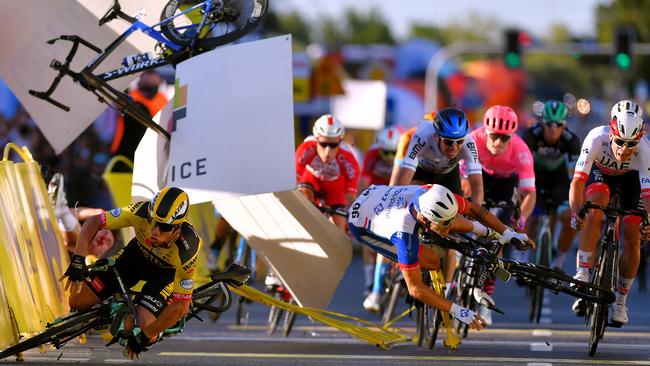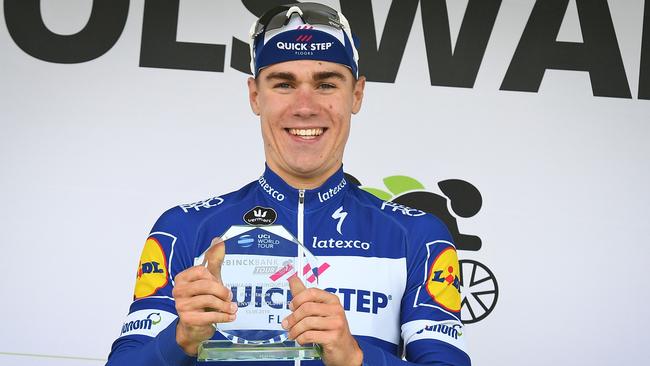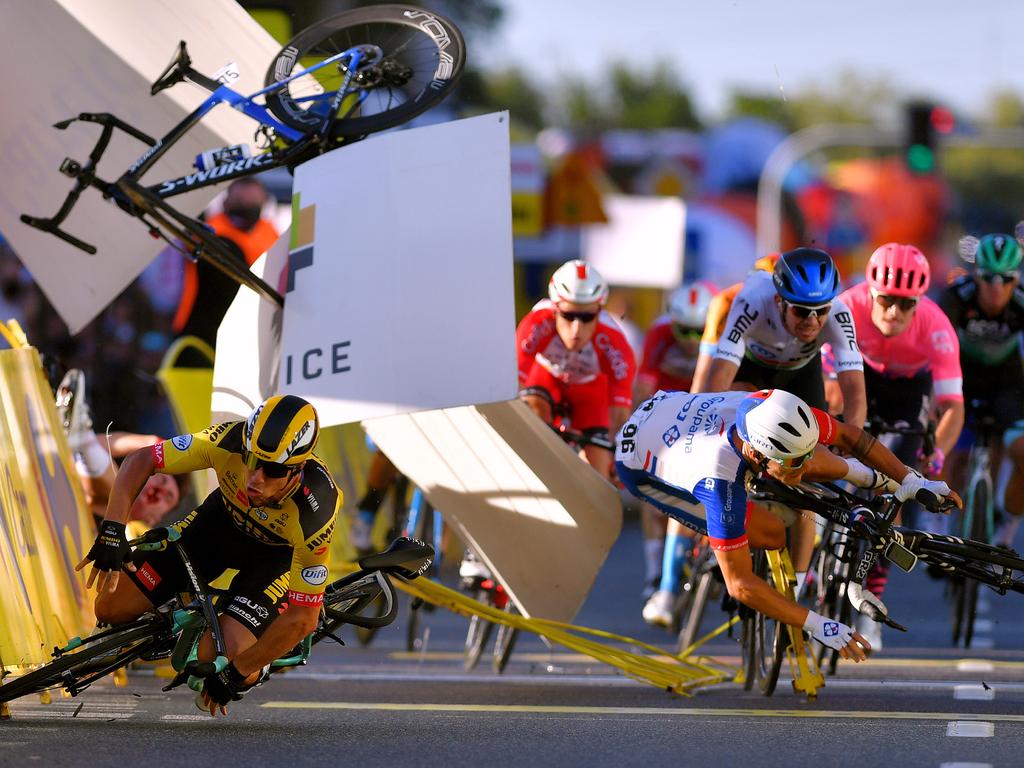Cycling: Crash course needed in rider safety after horror Tour of Poland accident

The coming days will reveal all that his body has endured in a horrifying crash at more than 80km/h. If Jakobsen can ever bring himself to look at the footage from stage one of the Tour of Poland, he may one day count himself fortunate to be alive.
There are deaths in the professional peloton. Pretty much everyone who follows road racing up close will have thought more than once that it is a miracle there are not more fatalities.
Watching the 23-year-old Jakobsen smash into flimsy barriers in another stomach-churning pandemonium of bodies and bikes was just such a moment to make the sport stop and wonder whether enough is done to limit the dangers that riders tolerate probably far too readily.

That’s cycling, as Jonathan Vaughters, the former rider who is now head of the EF Pro Cycling team, noted a couple of years ago when he talked about the countless hospital visits, gory medical reports and horrific roadside scenes of his long experience.
“We, the old guard, are so vaccinated against feeling in cycling,” Vaughters wrote in a piece for CyclingTips. “A crash with a concussion, a broken nose and collarbone is seen as lucky. Healthy, really. ‘He’s fine’ will be the response to anyone who asks, and then the follow-up is really how many weeks before he can begin training again.
“These thoughts, words and responses seem truly insane to someone not tenured in the world of bicycle racing. And I guess that’s because they are.”
That’s cycling. We may gawp at the footage but those within the sport have to avoid thinking too deeply about the perilous risks when cyclists are hurtling wheel-to-wheel at crazy speeds dressed in Lycra.
“That is the great open secret of bike racing — how often and how terribly they crash,” Dan Coyle noted in Lance Armstrong’s War. They crash in sprints and flying down mountain passes, on greasy roundabouts and into bollards and fences and ditches on sun-melted tar.
They break backs and pelvises and particularly collarbones. Never mind road rash and saddle sores, Coyle estimated that there were about five serious injuries per week among the four hundred or so professional cyclists. Over a six-month season, that amounted to a one-in-four chance of time in hospital.
In Jakobsen’s case, doctors initially feared his condition was life-threatening given the loss of blood and his head injuries, which included damage to his upper respiratory tract and a crushed palate.
As a race official also recovered from being knocked unconscious and other riders tended to their injuries, the sport of cycling was debating exactly what caused this pile-up and, not for the first or last time, what can be done in particular about the frenzy of a sprint finish. The easiest, quickest conclusion was to damn Dylan Groenewegen, the Jumbo Visma sprinter who veered across the road and used an elbow to “close the door” on Jakobsen’s attempt to come through along the barriers in the final yards in Katowice.
That type of move happens in many bunch sprints, but no one sensible disputed that Groenewegen deviated dangerously from his line. The Dutch racer was fined, disqualified and could yet face further measures from the Union Cycliste Internationale, cycling’s governing body. Groenewegen has apologised but that should not spare him further sanction.
Patrick Lefevere, head of Jakobsen’s Deceuninck-QuickStep team, has threatened legal action and even said that this could amount to criminality. He was highly emotional, understandably, but to blame one rider would be to delude ourselves that this danger might disappear by excluding one sprinter. We know better than that.
An accident waiting to happen? There were specific issues with the finish in Katowice. Firstly, being downhill, the riders were hurtling at about 80kmh as they drafted off each other’s wheels, then elbow to elbow. A downhill gradient may have added about 20kmh, plus danger.
The flimsiness of the roadside boards was another obvious concern, perhaps even a scandal. When British rider Mark Cavendish crashed into barriers at the 2017 Tour de France after Peter Sagan blocked him off, he bounced back into the road. That was a good thing, in that he slid and tumbled rather than smashing into something solid. His shoulder was broken but, as we have seen, it could have been worse. The demolition of plastic barriers in Katowice brought calls for a minimum standard, perhaps a regulation design for the last 500m.
Australian former sprinter Robbie McEwen said he had once proposed as much to the UCI, with no response: “(It was) a correct disqualification,” he said. “But the barrier set-up was not up to standard, nor are safety standards. How about final-kilometre safety standards instead of measuring sock height?”
Others called on the Professional Cyclists’ Association to do much more for its members, prioritising safety ahead of crowd considerations. “At over 80km/h, it’s crazy,” Movistar rider Jose Joaquin Rojas said. “Sometimes I get the feeling that we are simply cattle that are taken out of the road to give a show.”
Then there is regulating sprints themselves. The idea of lanes for sprinters has been aired but it is the darting from wheel to wheel, and the skilful use of slipstreams and knowing when to launch, that give these finales their thrill and fascination.
Perhaps the most constructive idea came from Brian Smith, the former British champion and now a pundit for Eurosport, who proposed Cote d’Azur lanes at the side of the road, like the light-blue boards on the bottom of a banked velodrome, which riders cannot enter, except for emergencies. “Is it time to have Cote d’Azur lanes on each side for sprints?” Smith wondered. “Barriers are not going away and in my opinion failed yesterday. One metre each side for safety. Anyone entering is disqualified unless avoiding a potential crash.”
Roads would need to be wide enough to accommodate these lanes — but then they should already have enough space to allow up to 200 cyclists to safely come through at speed — and the commissaires may be busy if a sprinter finds himself forced into the run-off zone.
But it would reduce the chances of a cyclist being shoved into barriers, or through them in Jakobsen’s case, with all the horrendous consequences.
There is a limit to how safe you can make a high-speed sport, but it was surely a day to wonder as Jakobsen lay unconscious in hospital in Sosnowiec, with his girlfriend and parents arriving on a private jet from the Netherlands to be at his bedside.
Meanwhile, the race is back on — that’s cycling — but if Jakobsen’s terrible injuries are not enough to make the sport’s leaders pause for serious thought, you wonder what it will take.
The Times




After operating for more than five hours on Fabio Jakobsen’s severe facial injuries and keeping the cyclist in a serious but stable condition, doctors near Katowice in Poland are hoping to wake the Dutchman from an induced coma.